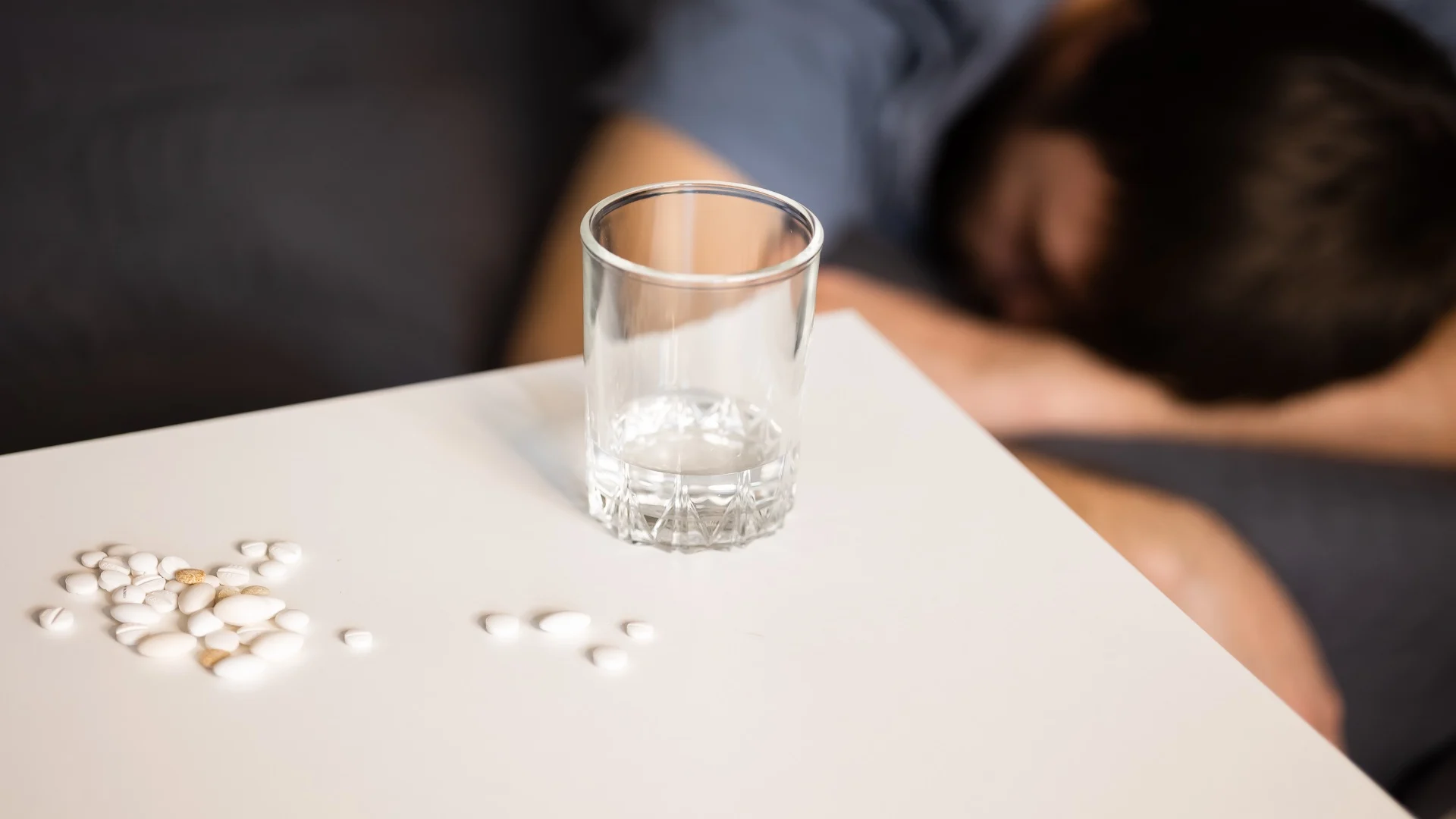Drug and Alcohol - Opioid Addiction
Opioid Use Disorder

Learn about opioid use disorder, its impact on individuals and families, and how personalized treatment can lead to lasting recovery and a better life.
What is the difference between opioid use and opioid addiction?
Opioid use refers to consuming opioids, either prescribed or illicit. Opioid addiction is a condition where opioid use becomes compulsive despite adverse consequences, causing significant physical, emotional, and social impairment.
How can I tell if someone has opioid use disorder?
Signs of OUD include social withdrawal, neglecting responsibilities, and mood swings. Physical symptoms may involve drowsiness, constricted pupils, and slow breathing. If these changes are noticed, it’s essential to encourage professional help for diagnosis and treatment.
Is opioid addiction treatable?
Yes, OUD is treatable through a combination of medication-assisted treatment (MAT), behavioral therapy, and strong support systems. Recovery is a long-term process, but with the proper treatment, individuals can regain control over their lives and maintain lasting sobriety.
What medications are used in treating opioid addiction?
Medications like methadone, buprenorphine, and naltrexone are commonly used to reduce cravings and withdrawal symptoms, helping individuals focus on recovery. These medications are typically part of a broader treatment plan involving therapy and ongoing support.
How can The Edge Treatment Center help someone with opioid use disorder?
The Edge Treatment Center provides personalized treatment plans that address opioid addiction and any co-occurring mental health issues. We offer medication-assisted treatment, therapy, and a supportive environment to help individuals overcome addiction and achieve long-term recovery.
Opioid addiction can silently take over your life or the life of someone you love—damaging health, relationships, and hope for the future. Watching that struggle unfold can feel helpless and heartbreaking. The weight of addiction often leaves you feeling isolated, afraid, and unsure of where to turn.
At The Edge Treatment Center, we offer a way forward. With personalized treatment plans, compassionate care, and a supportive environment, recovery isn’t just possible—it’s within reach. You deserve a life free from addiction, and we’re here to help you achieve it.
What Is Opioid Use Disorder?
Opioid use disorder (OUD) is a chronic medical condition marked by the compulsive use of opioids—whether prescription pain relievers or illicit drugs like heroin—despite knowing the harmful consequences.
It goes beyond occasional misuse; it reflects a pattern of behavior where opioids begin to take control of a person’s life, affecting their health, relationships, responsibilities, and overall well-being.
At its core, OUD isn't just a matter of willpower or poor choices. It's a brain disease that alters a person's thoughts, feelings, and behavior. Opioids work by binding to receptors in the brain that control pain and emotions.
Initially, this can produce feelings of pleasure or relief—but over time, the brain starts to rely on these substances to trigger those feelings. Natural reward systems become weakened, and individuals may feel unable to function normally without the drug.
As the brain adjusts, tolerance develops, meaning higher doses are needed to achieve the same effect. This leads to dependence, where stopping use causes uncomfortable or even dangerous withdrawal symptoms.
Psychologically, opioids can become a coping mechanism for stress, trauma, or mental health struggles—creating a deep emotional reliance.
Common Causes and Risk Factors
Opioid addiction often develops from a mix of genetic, psychological, and environmental influences. Understanding these risk factors can help identify those who may be more vulnerable.
Genetic Predisposition A family history of addiction increases the risk, as genetics can affect how the brain responds to opioids.
Prescription Opioid Use Many cases begin with legitimate prescriptions. Prolonged or improper use can quickly lead to dependence and addiction.
Mental Health and Trauma Conditions like depression, anxiety, PTSD, or past trauma often drive individuals to use opioids as a form of self-medication.
Environmental Influences Factors such as peer pressure, poverty, limited access to care, or growing up around substance use can raise the risk of developing OUD.

We’re Here To Help You Find Your Way
Would you like more information about opioid use? Reach out today.
Recognizing the Signs and Symptoms
Opioid use disorder affects individuals in various ways. Recognizing the signs early can lead to timely intervention and help loved ones seek the proper support.
Physical Signs
Drowsiness or a slowed reaction time
Constricted pupils (small, pinpoint pupils)
Respiratory depression, which can lead to slowed or irregular breathing—an indicator of overdose risk.
Behavioral Changes
Social withdrawal or isolation from family and friends
Neglecting responsibilities at work, school, or home
Financial problems are due to spending money on opioids or engaging in illegal activities to obtain them.
Psychological Symptoms
Mood swings, often swinging from euphoric highs to deep lows.
Increased anxiety and depression, which may worsen as the disorder progresses
Irritability and difficulty concentrating due to opioid use and its impact on mental health.
Withdrawal Syndrome of Opioid Use Disorder

Opioid withdrawal syndrome occurs when a person who is dependent on opioids suddenly reduces or stops their use. It is a key feature of Opioid addiction and can be both physically and emotionally distressing.
Common Symptoms Include:
Muscle aches
Nausea and vomiting
Diarrhea
Sweating and chills
Anxiety and irritability
Insomnia
Dilated pupils and watery eyes
Craving for opioids
While withdrawal is rarely life-threatening, it can be highly uncomfortable and often leads individuals to relapse. Medically supervised detox and medications like methadone, buprenorphine, or clonidine can help manage symptoms and support recovery.

We’ll Lead You to New Heights
Do you have more questions about opioid use? Reach out.
The Path to Recovery
Recovery from opioid use disorder (OUD) is possible, and the journey begins with taking that crucial first step toward seeking help. Early intervention is key—waiting too long can allow the disorder to take a deeper hold, making it harder to overcome.
Whether you or a loved one is struggling, seeking professional help as soon as possible is vital for long-term recovery and well-being.
Importance of Early Intervention and Seeking Professional Help
The earlier someone receives treatment for opioid addiction, the better their chances of recovery. Delaying intervention often worsens the physical and emotional effects of addiction.
Seeking help at the first signs of dependency can help reduce the severity of withdrawal symptoms, prevent relapse, and provide essential support throughout the recovery process.
Various treatment options are available, and the right approach depends on the individual’s specific needs. Successful recovery typically involves a combination of Medication-Assisted Treatment (MAT), Behavioral Therapies, and Support Systems.
Medication-Assisted Treatment (MAT)
MAT uses FDA-approved medications to help manage cravings and withdrawal symptoms, allowing individuals to focus on recovery without the intense discomfort of detox. Common medications include:
Methadone: A long-acting opioid that helps reduce cravings and withdrawal symptoms.
Buprenorphine: A partial opioid agonist that reduces cravings without producing a high.
Naltrexone: An opioid antagonist that blocks the effects of opioids, reducing cravings and preventing relapse.
MAT helps stabilize the individual’s brain chemistry, making engaging in other aspects of recovery, like therapy and self-care, easier.
Behavioral Therapies

Therapy plays a vital role in addressing the emotional and psychological aspects of addiction. Common types of treatment include:
Cognitive-Behavioral Therapy (CBT): This approach helps individuals recognize and change harmful thought patterns that contribute to opioid use. It also helps develop healthier coping strategies.
Contingency Management: A therapeutic strategy that uses rewards to reinforce positive behaviors like remaining drug-free or attending therapy sessions.
Motivational Interviewing: A collaborative, client-centered approach that helps individuals strengthen their motivation to change by exploring their ambivalence about treatment and recovery.
These therapies aim to help individuals understand the root causes of their addiction, build resilience, and develop lasting behavior changes.
Support Systems
Recovery is not a solo journey. A strong support system is crucial for long-term success. This includes:
Family Support: Family members can be pivotal in providing emotional support, encouragement, and accountability during recovery.
Peer Support Groups: Groups like Narcotics Anonymous (NA) offer a community of individuals who understand the struggles of addiction and can provide shared experiences and advice.
Community Resources: Local programs, counseling services, and online support networks can provide additional guidance, helping individuals build a network of resources to sustain their recovery.
The Edge Treatment Center offers personalized treatment plans that integrate all these approaches. We focus on providing the right blend of medication, therapy, and ongoing support to help you or your loved one reclaim a life free from opioid addiction.
Preventing Relapse and Sustaining Recovery
Recovery from opioid use disorder is an ongoing process. Preventing relapse and maintaining sobriety requires dedication, support, and healthy habits.
Strategies for Relapse Prevention
Coping Mechanisms: Learn stress management techniques like deep breathing and exercise to handle cravings and triggers.
Avoid High-Risk Situations: Steer clear of environments or people linked to past drug use.
Structure and Routine: Build a stable daily routine with achievable goals to stay grounded and focused on recovery.
Importance of Ongoing Support and Aftercare
Aftercare Programs: Continued therapy, outpatient care, and medication-assisted treatment (MAT) help prevent relapse and support long-term recovery.
Accountability: Regular check-ins with a healthcare provider offer guidance and reassurance during recovery.

We’re Here To Help You Find Your Way
Do you need advice about opioid use? Reach out today.
Opioid Use Disorder Taking Over Your Life? We're Here to Help
Opioid use disorder is a challenging and complex condition, but recovery is possible with the proper support and treatment. At The Edge Treatment Center, we specialize in providing personalized treatment plans to help you or your loved one overcome addiction and retake control of life.
Our comprehensive approach combines medication-assisted treatment, therapy, and ongoing support to guide you every step of the way. Don’t face this struggle alone—reach out to us today and start your journey toward lasting recovery.

We’re Here To Help You Find Your Way
If you or a loved one is struggling with addiction, there is hope. Our team can guide you on your journey to recovery. Call us today.
Written by
The Edge Treatment Center
Reviewed by
 Jeremy Arzt
Jeremy ArztChief Clinical Officer
Drug and Alcohol
Opioid Addiction
June 17, 2025
